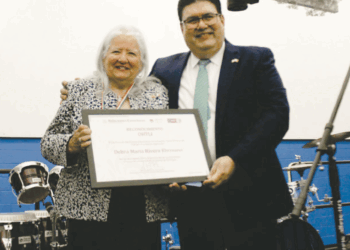Michigan’s failure to address opportunity gaps for students of color and English Learners has long been a travesty, with devastating outcomes for students.
And now those tragic results are poised to erupt into a full-blown crisis with significant implications for the health of Michigan, too.
That’s because immigrants and people of color will soon represent the future of population growth in Michigan, according to new statistics.
Unless dramatic changes occur to address disparities in our K-12 public schools, which have largely failed those students, Michigan is on the path toward an educational, talent and workforce calamity.
Consider these statistics:
Michigan’s Black student performance for 4th grade reading was in the bottom 5 states on the 2022 National Assessment for Educational Progress. The NAEP, often referred to as the nation’s Report Card, is one of the best indicators of how students fare against their peers across the nation.
Disparities among student groups are stark on Michigan assessments, too. On the M-STEP for 3rd grade reading proficiency, Black students scored 25.6 percentage points below the statewide average in 2022 and Latino students scored 12.1 percentage points below. The state also sees similar gaps in seventh-grade math scores. Meanwhile, English learners are also achieving at levels well below their peers on English Language Arts and math M-STEP assessments.
Additionally, Black and Latino students are more likely to be taught in classrooms with novice teachers in most states across the country.
Those statistics are alarming enough on their own and should be addressed as a moral imperative. But the dismal education that Michigan is providing our students of color and English Learners must also be tackled as a business imperative.
Where we’ve been and where we’re going
According to the new data from Citizens Research Council of Michigan and Altarum, Michigan’s growth rate has slowed below the national average over the last 50 years and now ranks almost dead last in the nation for population growth since 2000.
That population drain is having a significant impact on businesses, which are struggling to find employees to fill their ranks. In fact, some have had to close permanently because they simply can’t find enough workers.
The only bright spot for our state’s population is projected to come from people of color, who will represent 40 percent of the working age population by 2050, according to the report. Tragically, a high proportion of this population “historically suffer from poorer health, poorer educational outcomes, and less access to wealth-generating investment opportunities,” the report noted.
Tackling the disparities
To tackle these disparities, state leaders should start by addressing Michigan’s unfair school funding system that leads to these devastating opportunity gaps for our school-age learners.
For instance, among 31 states with similar funding formulas, Michigan ranks 26th for our English Learner funding.
That’s a far cry compared to states like Maryland, which is phasing in a weight of 85% more for English Learners, and Georgia which now allocates an astounding 160% more funding for those students.
Indeed, Michigan is underfunding students from low-income backgrounds and English Learners by an estimated $5.1 billion annually compared to what leading states practice and what research indicates is needed for those students to succeed, according to a new analysis by The Education Trust-Midwest.
And among 28 states with similar funding formulas, Michigan ranks 20th for our low-income funding weight. Meanwhile, Massachusetts, which is the top performing state in the nation, is phasing in weights of 40% to 100% for students experiencing poverty.
What we need to do now
Michigan policymakers have an opportunity now to change the system that has failed our students — and our businesses — for too long.
That’s why we need to follow the example of leading states like Massachusetts, Maryland and Georgia, which are investing significantly in students with the greatest needs.
We support creating an Opportunity Index with transformative equity weights of 40%-100% to address concentrations of poverty, which often impact new immigrants and people of color. And we also support creating a weighted student funding formula for English Learners with weights ranging from 80%-100% based on English language proficiency.
Our students are depending on us for their educational success. Michigan’s businesses are depending on us to prepare the workforce of the future. And the health of our state will depend upon finally tackling the disparities in education. Let’s finally do what’s right for all Michigan students.
Angie Reyes is executive director and founder, Detroit Hispanic Development Corporation. Dave Meador is retired vice chairman of DTE Energy Co. and co-founder of the Autism Alliance of Michigan. Ken Whipple of the Michigan Achieves Leadership Council is retired chairman and CEO of CMS Energy Corp.














































